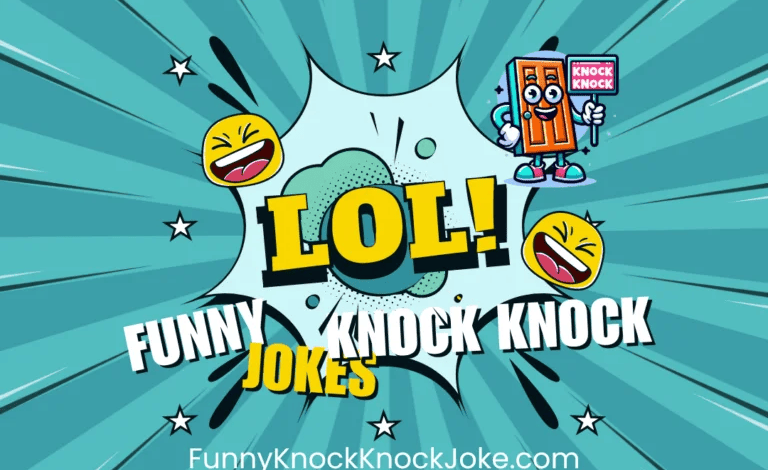The Enduring Charm of Knock Knock Jokes

Knock knock jokes have delighted audiences for many years with their straightforward humor, engaging repetition, and clever wordplay. These playful and interactive jokes are popular among children and adults alike, bringing out laughter or a groan with their witty punchlines. But what is it that makes knock knock jokes continue to be funny after all these years?
The Origins of Knock Knock Jokes
Although the exact origins of knock knock jokes remain unclear, they likely emerged in the early 20th century. These jokes rose to fame during the era of Vaudeville, where comedians entertained audiences with clever dialogue and interactive performances. By the 1930s, knock knock jokes started appearing in print and quickly became part of the mainstream humor landscape.
The Classic Structure
One of the most iconic aspects of knock knock jokes is their straightforward five-part structure:
Knock knock.
Who’s there?
Atch.
Atch who?
Bless you!
This format is simple to remember and share, making it enjoyable for people of all ages—from children sharing their first jokes to adults looking for a quick laugh.
Why Are Knock Knock Jokes So Entertaining?
The charm of knock knock jokes lies in a few key features:
Simplicity: The humor is easy to understand, often revolving around familiar phrases or words, making the punchlines relatable and enjoyable.
Interaction: Unlike most jokes, knock knock jokes actively involve the listener. This exchange creates anticipation and strengthens the joke’s impact.
Wordplay: At the heart of many knock knock jokes is a pun, where wordplay turns the punchline into a delightful twist. It’s this play on words that brings the surprise factor, enhancing the humor.
Wide Appeal: These jokes are universal in nature, crossing cultural and age boundaries. Their versatility makes them a great form of humor for various settings.
The Appeal of Wordplay
A key ingredient in knock knock jokes is their reliance on clever wordplay, which adds to their charm. By taking everyday words or names and using them in unexpected ways, they create a sense of surprise. For example:
Knock knock.
Who’s there?
Boo.
Boo who?
Don’t cry, it’s just a joke!
In this example, the humor stems from shifting “boo” from a greeting to an expression of sadness, resulting in a playful punchline.
Why Knock Knock Jokes Still Matter
Even as trends in comedy shift, knock knock jokes remain a go-to form of humor. Their concise structure makes them popular on social media and meme platforms, where they are often adapted to suit modern tastes. Whether in their traditional form or with a contemporary spin, knock knock jokes continue to bring smiles to people’s faces.
Consider this playful modern version:
Knock knock.
Who’s there?
Europe.
Europe who?
No, you’re a poo!
Though undeniably silly, these kinds of jokes thrive on the element of surprise, which is the essence of great humor.
Conclusion: The Timeless Appeal of Knock Knock Jokes
Knock knock jokes have stood the test of time due to their interactive nature, smart wordplay, and broad appeal. Their ability to make people of all ages laugh cements their place as a timeless classic in the world of humor. Whether you’re sharing a simple joke with a child or enjoying a witty pun, knock knock jokes prove that the simplest forms of comedy often leave the biggest impact.
So the next time someone says “knock knock,” get ready to laugh—because these jokes aren’t going anywhere!



